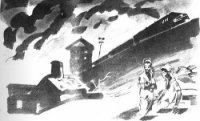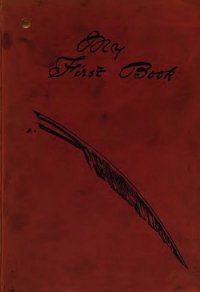Operation Nemesis: The Assassination Plot that Avenged the Armenian Genocide - Bogosian Eric (мир книг .txt) 📗
Tehlirian’s first assignment was as an unarmed medical orderly, attached to troops equipped with German Mauser or British Lee-Enfield rifles, always fitted with bayonets. In addition, the seasoned fedayeen draped bandoliers over their shoulders and kept pistols and fighting knives thrust into their belts. The Russian troops were further supported by horse-drawn artillery guns—provided there were any horses available and the roads passable. Cumbersome machine guns weighing sixty pounds or more were rare but, when brought to bear on the enemy, terribly effective. These self-loading weapons evolved from the original Gatlings and Maxims, the fierce rapid-fire killing machines that had opened the colonies in Africa and China. One gunner with a Gatling gun could make mincemeat of any conventional formation of troops.
Horses were in short supply, giving the Turks, Germans, Kurds, and Cossacks an edge over the irregulars. Motorized vehicles, unusual in the east, weren’t of much use because of the exceptionally rugged roadways. Though airplanes fitted for battle were being employed for the first time on the European front, they played no part near the Caucasian front. Tanks were also absent since it was impossible to transport them into the battle zone. Artillery, mortars, and machine guns gave the Russians and Armenians some advantage over the Kurds, who were equipped with nineteenth-century weaponry and carried little more than swords, clubs, and hatchets alongside their rifles.
Most of the fighting took place in landlocked or mountainous no-man’s-lands. During the winter months, the snow would drift so deep that horses were mired in their tracks, dying where they stood. Stranded on treacherous heights, the thinly dressed soldiers froze by the thousands. Supply lines were easily cut, adding to the distress of the troops. Surrounded by weak and diseased men, the commanders had no choice but to abandon the wounded to die where they lay. Typhus (spread by fleas), cholera, and famine killed thousands more.
During their first months on the ground, Tehlirian’s company roamed northern Persia spoiling for a fight. The bitter winter winds brought sleet and snow, slowing the action and making confrontation infrequent. Even as the Russians pushed forward, the Ottoman troops simply melted away, abandoning the region and retreating westward. Combat was confined primarily to skirmishes with the local Kurdish tribesmen.
Tehlirian and his cohorts had no idea that the cataclysm of the Armenian Genocide had begun. Virtually overnight in the spring of 1915, on the evening of April 24–25, prominent Armenians throughout the Ottoman Empire had been swiftly rounded up as a prelude to what was to come. In the first series of arrests in Constantinople, gendarmes roused over two hundred doctors, editors, pharmacists, teachers, authors, and statesmen in the middle of the night, usually under the pretext of some minor violation, and ordered them to report to the local police station. These important members of the Armenian community dutifully arrived at their respective precinct houses, whereupon each was placed under arrest. In effect, each police station acted as a collection point for its precinct. In the early morning hours of April 25, the arrested men from all over Constantinople were marched through the streets to the “new prison” near Topkapi Palace. (Today this prison has been refurbished as a fancy hotel and restaurant. You can enjoy a four-star meal at the very location where the genocide began in the capital.) The men remained imprisoned for a few days, confused as to why they had been arrested in the first place. Families were allowed to pass food and bedding to the inmates through the barred windows.
Two nights later, the entire group was woken a few hours before dawn and again marched through the old city down to the docks, where a small steamer lay anchored. It was becoming clear to all the men, Constantinople’s Armenian elite, that this was more than simple harassment. The men were hustled aboard, and within the hour the steamer was ferrying them across the Bosphorus to the Asiatic side of the city, where they were herded onto passenger trains. The journey from the city was broken only once, when the prisoners with political affiliations were segregated, removed from the carriages, shackled, and taken away on carts. These men would receive special torture. The end of the line was the fortress town of Cankiri.3
In Constantinople, arrests continued as the authorities sought every Armenian man with an education or who had the potential for any kind of leadership. This pattern of arrests was repeated in all the major cities of the empire where large Armenian communities existed. In the end, thousands of “notables” were collected up. Some were held as prisoners for months before being deported in the death caravans, others were tortured and killed on the spot, and others, in a confusing but relentless pattern, were moved from prison to prison before being murdered. Some of the most politically sensitive prisoners (former parliamentarians) were transferred far to the east “for trial” and, while in transit, killed “by bandits” on the open road.
The CUP had achieved a major goal: the destruction of the Armenian leadership at the outset of the larger genocide. Some of the men were spared death but were left so traumatized that they went mad. A prime example was the composer Gomidas Vartabed. Internationally known, Gomidas, a priest and creator of haunting liturgical music, was the greatest Armenian composer of the modern era. His composition for the Armenian liturgy is considered a masterwork. After Gomidas was arrested and deported on April 24, pressure by Turkish and American VIPs forced his return. But the damage had been done; no longer capable of caring for himself, Gomidas, one of the most brilliant minds of the late Ottoman period, spent the remainder of his life institutionalized.4
The German humanitarian and Armenophile Johannes Lepsius testified: “The Young Turks and the Armenians made the revolution together. The leaders were friends and supported one another’s election. During the first months of the war, relations between them seemed amicable. Suddenly on the evenings of April 24 and 25, 1915, to the complete surprise of everyone in Constantinople, 235 Armenian intellectuals [meilleure societe] were arrested, jailed, and then sent to Asia Minor.… Practically all of the Armenian intellectual leaders in Constantinople were wiped out in this manner.”5
Among those not immediately arrested were author and parliamentarian Krikor Zohrab and another deputy, Hovhannes Seringiulian (known as Vartkes). Both had been on friendly terms with Talat before the roundups, so they believed they could persuade the interior minister to release their cohorts. Visiting Talat at home, Zohrab engaged him in a friendly game of cards. When queried about the whereabouts of the arrested men, Talat answered, “During our time of weakness, your people pushed for reforms and were a thorn in our side; now we are going to take advantage of our favorable situation and disperse your people so that it will take you fifty years before you talk again about reforms.”6 To Zohrab, perhaps the most sensitive and intelligent leader of the Armenian community (and not a member of the ARF), the message was clear. The CUP was in the process of “solving” the Armenian question.
About a month after the first arrests, Zohrab was detained. At the end of the summer, Zohrab, poet Daniel Varoujan, and three others were moved to another location “for trial.” While in transit, the group was stopped by orders from the CUP. When Varoujan resisted, his eyes were gouged out and he was disemboweled. The parliamentarian Krikor Zohrab was shot once in the chest and died on the spot.7 Around this same time (the summer of 1915), twenty Hnchagian activists who had been imprisoned for almost a year were hanged in Sultan Bayazid Square in Constantinople. The Armenian leadership had been nullified.




